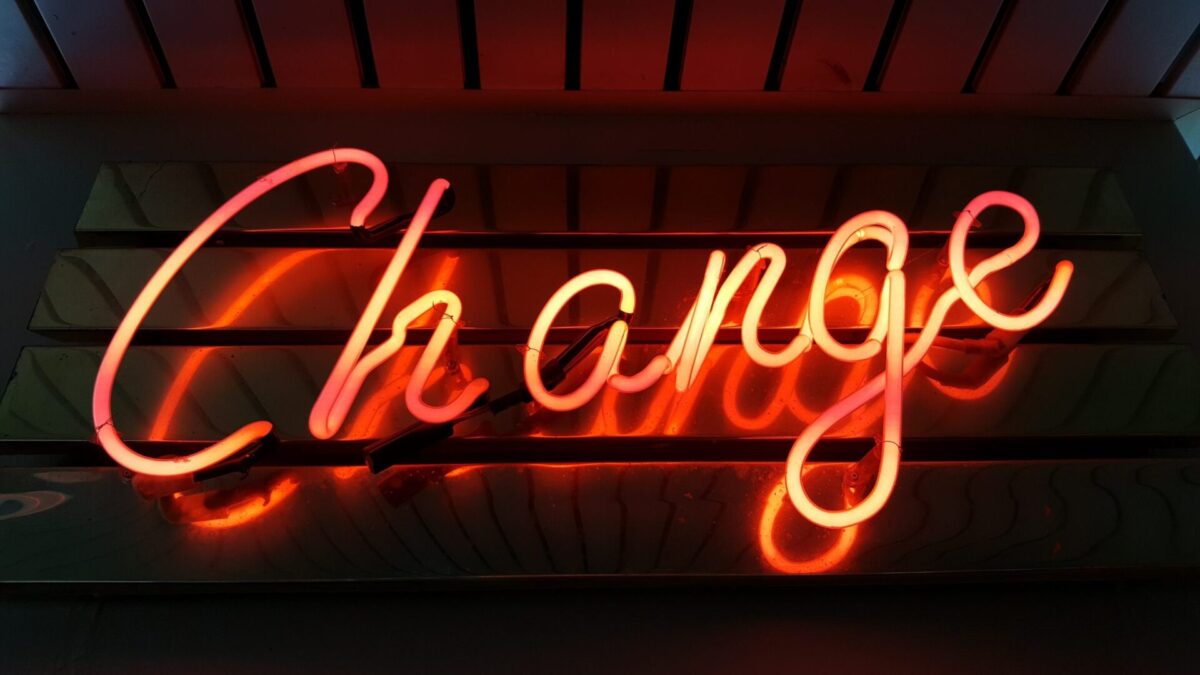This is the first post in the series 7 Easy Steps to be a Better Quitter. This series provides journal prompts and writing topics to enable big changes. I used this process to quit smoking, change jobs, start running, and eliminate debt. It works!
A long time ago I met this very interesting man from Ethiopia. He was trying to help me understand that all the problems I was complaining about were traceable back to one root cause. And that until I fixed the root cause, I would waste all my energy managing the peripheral symptoms.
He said, “Imagine you have a rabbit. This rabbit – he poops everywhere. You follow this rabbit around, picking up the tons of tiny poops. You spend all your energy picking up poop after poop, and there is always more. You are exhausted from chasing the rabbit around endlessly. Why don’t you just get rid of the rabbit?”
(He actually recommended eating the rabbit, but I think you get the point.)
We invest a lot of our precious energy in maintaining bad habits and addictions that we’d do better without. Our medical system treats symptoms instead of addressing root causes. Our political engine does the same.
Attacking a problem at its root is the only way to make significant progress in any area of your life. Treating symptom after symptom is a waste of energy.
Journaling is the perfect tool to identify and eliminate root issues that are holding you back from reaching your dreams.
Identify What’s Holding You Back
In the spirit of Micro-goals, it’s best to start small. We want to focus on one single behavioral change that will have the most impact on your quality of life. This is the 80/20 principle – what single habit is responsible for the majority of your problems?
What one behavior is keeping you from reaching your full potential? What one change could you make that would offer big wins? Digging deeper for the answer means getting to the root of your problems – here are three journaling methods for finding it.
Working/Not Working
Do a round of working/not working to generate a list of current complaints. We will use this list to see if there’s a common thread among your “not-workings.”
(The Working/Not Working journaling exercise is simple: make two columns labeled “working” and “not working” and brainstorm for ten minutes without stopping. Anything in your life that’s causing you stress or bringing you pleasure should go on the list. Big and small. Don’t edit, just write.)
Here’s a real world example from my own life. Awhile back, I had many exciting projects I was eager to work on. But I found I was just too exhausted when I got home from work to spend any time on creative projects. It was frustrating because I wanted to do this stuff – I simply didn’t have the energy.
I wasn’t sleeping well – I was plagued with insomnia for weeks at a time. I needed four shots of espresso to get out of bed in the morning. Without caffeine, I couldn’t function. By the time the afternoon came, the cycle of caffeine high, crash, high tired me out.
When the buzz wore off, I became aware of how drained my body was. I thought if I could just get some quality sleep, I’d be able to feel better. My doctor prescribed tranquilizers, but I awoke feeling worse and remained groggy throughout the day. So I required more coffee to keep going.
The coffee swing also made me crave sugar, so I was eating poorly and gaining weight.
During a round of Working/Not Working, I spelled it all out. I came out with a big mess of many problems: insomnia, exhaustion, reliance on prescription pills, overconsumption of sugar, weight gain, lack of exercise.
But after examining all these issues, I realized they were all caused directly or indirectly by one root cause: caffeine. Eliminating caffeine could remedy all these issues, or at least make them more manageable.
So I kicked my 1,000 mg a day caffeine habit. First the Diet Coke, then the coffee. I gradually whittled my daily espresso habit down from three quad americanos (12 shots of espresso) to none.
I slept 18 hours a day for the first week or so. My body obviously needed it. Now I sleep deeply and I awake refreshed. I have steady energy throughout the day since I’m not experiencing the wild dips caused by chronic caffeine consumption.
I don’t need prescription sleeping pills to rest, so I don’t wake up feeling hungover and groggy. I’m not craving sugar 24/7, so I can make healthier food choices, resulting in even more energy. Not only do I have the energy for my creative projects, but I can go for a run after work.
Had I not drilled down to the root cause of all these problems, I could have wasted years treating the symptoms.
Why? Why? Why?
Here’s another journaling prompt I find useful for digging down to the root cause of problems. Repetitive use of the question “Why” can help unveil the real reasons behind your behaviors. Keep asking “Why?” until you reach an actionable step.
Get out your journal and write your problem at the top. Then keep answering the question “Why?” in writing.
Here’s an example.
I dream of taking a class in metal-smithing, but I can’t afford the class fee.
Why? Because I don’t have any money leftover.
Why? Because I spend it all as soon as I get it.
Why? Because I don’t plan ahead for upcoming expenses so everything hits me by surprise.
Why? Because I’m not paying attention to my finances.
Why? Because it’s uncomfortable to look at my financial situation.
Why? Because I’m ashamed of my spending behavior.
So your problem is not really your lack of money, but your lack of attention to the money you have. The bad habit is pretending that if you ignore something, it will go away, ostrich-style. And it does go away. Your money, that is.
You have to work on overcoming your resistance to discomfort. We can’t grow if we’re always comfortable. The discomfort won’t kill you – I promise.
Regularly reviewing your financial situation helps you get a grip on it. You can put aside money from each paycheck to cover those “surprise” expenses that always crop up. Then you could put away a few bucks for your dream class. Even $20 per paycheck adds up quickly. In a few weeks, you’d have the money you need to start metal-smithing.
Wishlist/Fill in the Blank
The final method for getting to the root cause is using fill-in-the-blank sentences like the ones below. Try completing these questions in your journal.
- I wish I could give up _________.
- If I was honest with myself, I’d admit that I need to stop _________.
- I’m most ashamed that I keep _________.
- I would be free if it wasn’t for _________.
- It’s hard to admit that I can’t stop ___________.
- I wish I had the discipline to _______________.
- I really need to start ___________.
- I can’t reach my dreams because _________.
In the next post we’ll discover what’s at stake if you don’t change this behavior. It’s very motivating!
Continue the 7 Easy Steps to be a Better Quitter series: Don’t You Realize What’s at Stake?
Be a Better Quitter in 7 Easy Steps
Visit the Be a Better Quitter in 7 Easy Steps series page for a list of all posts with summaries.
#1 What One Change Do You Need to Make?
#2 Do You Realize What’s at Stake?
#3 You Do It Because it Works
#4 How to Write Plan B
#5 Where’d You Hide the Chocolate?!
#6 Who’s on Your Board of Directors?
#7 Celebrate Your Success




